In short, a MacBook Air lasts for between 6 – 8 years for most people, but this could be as short as four or five years, or as long as ten depending on the factors we will discuss in this article.
Because Macs are expensive, it’s logical that many customers may want to put off replacing them for as long as possible. But how long can you expect a MacBook Air to last?
You could also be thinking about purchasing a used MacBook Air and wondering how old is too old. For instance, the 2015 MacBook Air can be had for around $300, but is a 2015 machine running macOS Sierra a sensible purchase, or would you be better off investing a little more on a brand new Macbook Air?
One element to consider is the age at which most Macs begin to have problems, such as random shutdowns and degraded batteries that no longer hold a charge. Unfortunately, however well you look after it, your Mac or MacBook will eventually become obsolete, and you will need to hunt for a replacement.
Another difficulty with old Macs is that the software you require may not work on them. You may also discover that Apple no longer maintains the operating system software that runs on that Mac, leaving you vulnerable to malware and security flaws.
In this article, we will discuss these issues, answering “how long does a MacBook Air 2020 last?” as well as provide advice on which Macs are still backed by Apple, which Macbook Air can still be serviced if necessary (Apple halts supplying the necessary components after a certain number of years), and which Macs Apple considers obsolete and vintage.
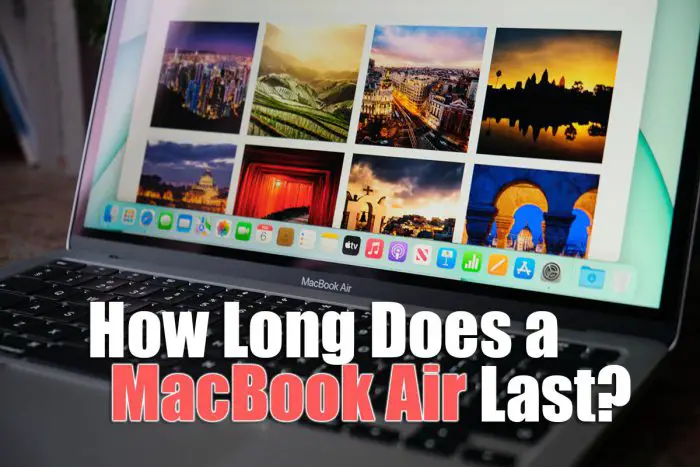
How Long Do MacBook Airs Last?
If you consider “last” to be as long as there is a new software update for it, I’d say 7 to 8 years. If by “last” you mean as long as everything on it works, then it should endure roughly ten years. It’s a more tricky question if “last” suggests that it is only for as long as it is still usable.
This is because if you use it for heavy work, it may become too underpowered (and therefore unusable) after four years, whereas if you only use it to browse the web and produce word documents, it may seem snappy for up to seven years. The most common answer (the one that corresponds to the majority of users) is probably 6–8 years.
Because of Apple’s excellent build quality, all aluminum unibody MacBook Airs have a largely infinite physical lifespan. At the moment, the 2010 models are still receiving security updates, so we can say that the MacBook Air can live at least ten years.
We may also use a third-party application to remove the restriction, allowing the most recent, fully supported version of macOS to be loaded on any Intel-based MacBook Air, giving them limitless life. Based on the foregoing, you could easily go 15 years with a single MacBook (Air, Pro, etc.), and it would still be completely serviceable to you.
You’ll just need to replace the battery (if you use it on battery power) every two to five years or so.
How Long Does a MacBook Air Battery Last?
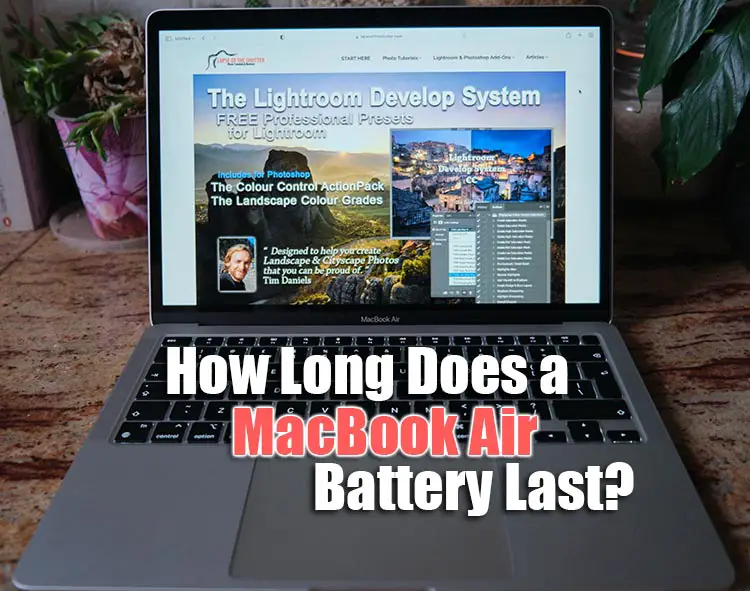
For previous models of MacBook Air, the battery tends to last on average for around two to five years, but this depends on the luck of the draw with your battery, and also depends on how much you are using your MacBook Air.
If you are fully draining and charging your battery every day, you are likely to see lower overall battery health than those who are using their MacBook Air less frequently.
It’s also debatable whether leaving the laptop plugged in permanently damages the battery in these new models. With older MacBooks, there was definitely the potential to damage the battery by effectively overcharging it – leaving it plugged in, even when fully charged.
Apple claim to have dealt with this issue, and state that you can leave your MacBook Air plugged in for longer periods of time now. But it may still increase battery life to run it through a few charge / discharge cycles every now and then, as well as use something like Al Dente to keep your battery charged to between 20 – 80% for potentially longer life.
How to Make Your MacBook Air Last a Long Time
There are a handful of areas in which a little bit of knowledge can help you to extend how long you MacBook Air lasts for, including:
- Batteries
- Software Updates
- Warranty
Following the advice below should help you to have a longer lasting MacBook Air, although bear in mind that it is never going to last forever.
Battery Care and Upkeep
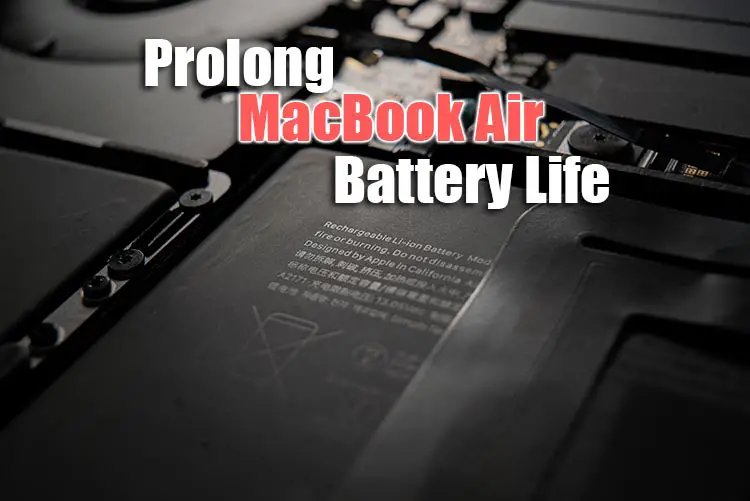
If you own a MacBook Air, you’re surely aware that the battery that keeps your MacBook Air running when it’s not attached to the power source is frequently cited as the most common cause for getting a new Mac.
The most common complaints are that the battery no longer maintains a charge, won’t accept a charge, or has a very short duration when charged, perhaps an hour or less. The answer to this type of battery problem is to change it yourself or have it replaced by a professional.
Whatever you do the battery will fail eventually, but there are several things you can do to extend its life:
Avoid Extreme Temperatures
MacBook batteries prefer an ambient functioning temperature of 50° F to 95° F. Using your Mac on cold days may cause a temporary decrease in battery performance. Using the battery in temperatures above 95° F can result in a permanent decrease in battery performance.
Charging the battery when the temperature is above 95° F might cause additional harm and shorten the battery’s life.
The MacBook battery can also be stored at temperatures ranging from -4° F to 113° F. Even while not in use, the battery might be permanently damaged by extreme cold or heat.
Battery Storage
If you don’t intend to use your MacBook for an extended period of time, charge it to around half capacity and then turn it off; do not keep it in sleep mode. This can prevent a deep discharge, which can have a negative impact on the battery’s ability to hold a charge later. When keeping a battery for an extended period of time, a half charge is the safest condition for it to be in.
Exercising Your MacBook’s Battery
You may be tempted to leave your MacBook plugged in all the time. This is not a smart idea because leaving the battery fully charged for a lengthy period of time can result in overall capacity loss and a shorter battery life. Instead, use the battery as it was intended: to occasionally power the MacBook.
If you do want to leave it plugged into a wall socket permanently, then software like Al Dente will come in handy to prevent long-term battery damage.
Keeping the Device Safe
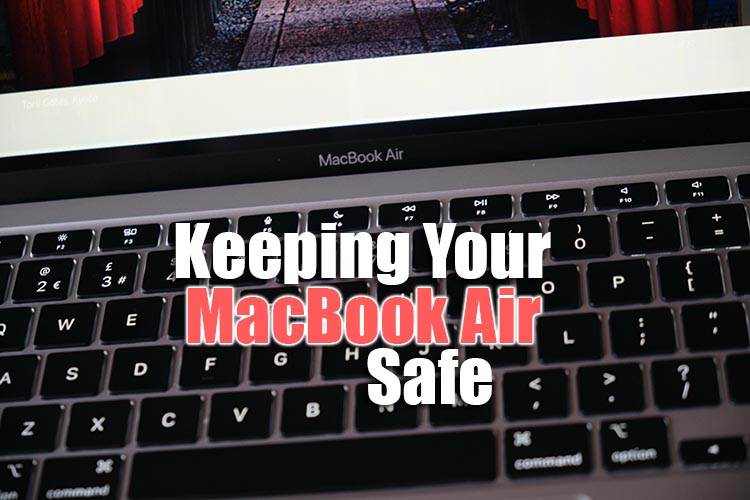
Update Software on a Regular Basis
Maintaining your software up to date might help keep your Mac running smoothly. It’s possible that you’re content with the version of Mac OS you’re now running and don’t require any of the new features in the following versions.
However, updating your system usually delivers new security and performance updates that may help extend the life of your Mac.
System upgrades have also, on occasion, had a negative influence on older Macs, making the decision to upgrade a bit of a tossup. I’ve always tried to maintain my older Macs running the most recent version of the operating system.
There are legitimate reasons not to upgrade, like the necessity to utilize an app that is no longer supported by a later version of the operating system. So before determining whether or not to switch to a newer operating system, make sure you check that your favorite third-party apps are supported.
Back up on a Regular Basis
The final tip for prolonging the life of your Mac is to accept that a failure or an upgrade to a newer Mac will be necessary at some point. Having up-to-date backups and also archives of vital data will make the transition easier.
Clean Install the macOS
If you’re having issues with your device, be sure to declutter it first, then clean install the operating system to check if that fixes your issues.
Get Applecare+ Warranty
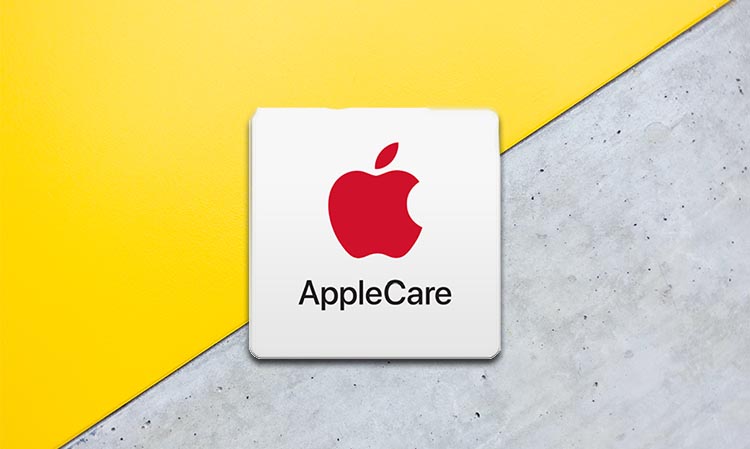
AppleCare is the company’s first-party warranty coverage for its products. Most Apple goods come with a one-year warranty against defects and three months of tech assistance if you need it—this is known as AppleCare. Adding AppleCare+, Apple’s extended warranty, extends these protection periods, ensuring that your devices are covered for a longer length of time.
We usually advise against purchasing extended warranties for devices. They are mainly merely a ruse for the seller to generate more money, as most devices will not require repairs over their lives.
AppleCare, on the other hand, is a peculiar example due to Apple’s strong control over its goods. Because the company creates the hardware, operating system, and a plethora of apps for its devices, having a guarantee from that company can be pretty appealing.
Notably, AppleCare+ also covers unintentional damage. In many circumstances, AppleCare+ coverage can be transferred. If you sell or give away your gadget, the remaining warranty will be transferred to the new owner. This can make it easier to sell your laptop in the future because the added coverage sweetens the bargain.
When to Change Your MacBook Air
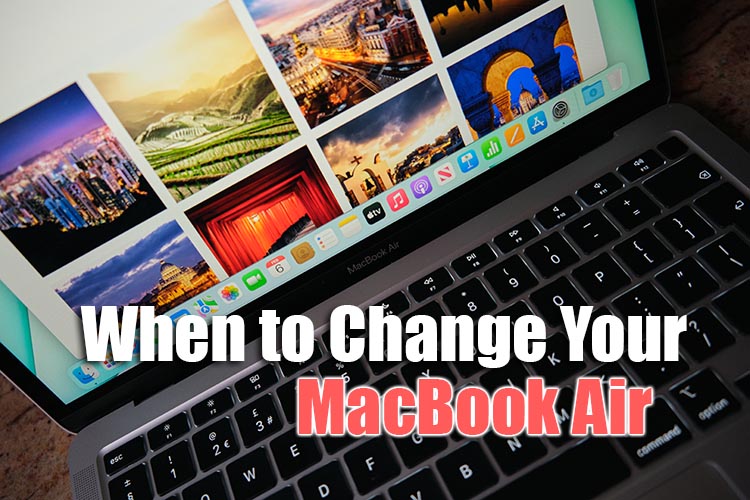
- Apple no longer supports the most recent version of the software on which it operates (that may leave your device vulnerable).
- It no longer supports the apps you require.
- The Mac struggles to do the duties you require of it, especially if you are unable to replace the RAM or other components.
- Something breaks and is either too expensive to repair or the necessary parts are unavailable.
- The Mac is experiencing technical problems. Unexpected shutdowns are becoming more common, and you’ve done everything to solve the problem with no success.
Outdated Macs
Apple normally keeps the last three versions of macOS up to date with bug patches and crucial security upgrades, ensuring that the most recent version of Safari runs and that Apple Services, such as iCloud, are properly supported.
This means that Apple will now support the following macOS versions: macOS Monterey (macOS 12), macOS Big Sur (macOS 11), and macOS Catalina (10.15). If your Mac is running one of these versions of macOS, you can be confident that Apple will keep an eye out for any security flaws or other issues with these operating systems.
Nevertheless, if your Mac is using an older version of the operating system—macOS Mojave (10.14) or earlier—you may be left in the cold when it comes to critical Apple software upgrades. If the software is too old, you may discover that your other Apple items are incompatible with your Mac.
Obsolete Macs are those that Apple no longer sells and have been out of production for more than seven years. If a Mac is placed on Apple’s obsolete list, it is unlikely that it will be fixed if something goes wrong. You may be able to locate spare components on your own, but Apple will not offer them.
Fix the Device or Get a New One?
Every computer has a time in its life when a diminishing return must be considered. You just know that you can’t add enhancements to it or do anything to boost the performance, and while mending it may give you a little more use out of it, it won’t be a long-term solution. At that time, it’s probably best to bite the bullet and purchase a new one.
As a rule of thumb, it is usually advisable to replace your MacBook if the cost of repair is equal to or greater than the cost of a new one, or if the machine is simply too old to spend that much money on.
You’ll get a more recent MacBook that is speedier and more efficient, and it comes with the all-important guarantee! Be advised that AppleCare and their normal warranty will not cover any unintentional damage, so be careful!
MacBook Air 2020 Technical Specs and Details

The new MacBook Air 2020 offers about everything you might desire in an Apple notebook, due to its M1 Chipset, which enables record-breaking performance and battery life. The MacBook Air, when brand new, can last for an incredible 29 hours in ideal conditions, but if the question is, how long does a MacBook Air battery last before battery life drops significantly below this, then it’s around 2 – 5 years, depending on usage.
On the Geekbench 5.2 total performance test, the new M1 MacBook Air with 16GB of RAM scored a thunderous 7,412, crushing the XPS 13 (5,319, Core i7-1165G7) with an 11th Gen (Tiger Lake) Intel Core. The Surface Laptop 3 (4,791) with 10th Gen Intel CPU is behind, although this still outperformed the category average (4,178).
The MacBook Air comes with the Magic Keyboard, which is significantly more comfortable and dependable than the preceding Butterfly keyboard, which suffered from some technical defects. After trying the two keyboards side by side it’s clear that the new version is far superior thanks to its greater range of motion in the keys and enhanced layout.
The screen is also crisp, having a resolution of 2560 x 1600 pixels. The most recent version of the Air supports the P3 color range for more vibrant tones, as well as True Tone, which adapts the color temperature on the display depending on ambient lighting conditions.
Touch ID is another feature that makes it simple to unlock the machine, make secure payments, and change passwords. The 720p webcam on the new MacBook Air has also received a modest bump thanks to the M1 chip, and the system now accepts iOS and iPadOS apps, but few are suited for laptops.
Usage Comparison for the MacBook Air
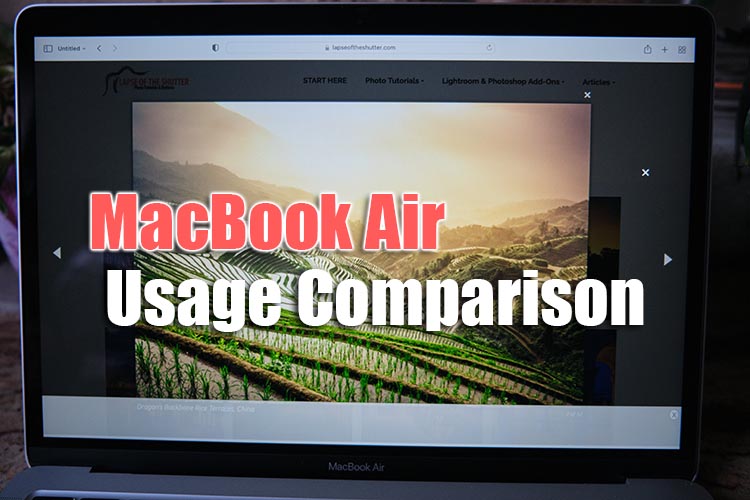
General Purpose
Do you only use your Mac to browse the web, send emails, listen to music, or play simple games? If this is the case, you do not need to get the most expensive Mac, and this is where the Air is the most suited model.
Do you desire portability as well? If so, how much weight are you willing to tote around with you? Do you want a computer that you can use on your desk yet fold up when not in use? For many people, today’s laptops can provide the best of both worlds. If weight is important, the MacBook Air is the lightest of Apple’s laptops at 2.8 lb.
For general purpose use, the MacBook Air can be expected to last up to, and possibly beyond, 10 years.
Standard Workplace Usage
The MacBook Air, like any other laptop, has its drawbacks, but it still has some benefits that make it helpful in a work context. For example, it no longer includes the Apple T2 Security Chip, but handles this within the M1 chip, and which includes a secure enclave coprocessor that safeguards Touch ID as well as device encryption and secure boot features.
The MacBook Air also includes numerous capabilities that might assist with accessibility issues. Employees may complete some jobs without touching anything by using their voices to open and interact with apps, browse the web, or write and edit documents.
They can also swiftly zoom in on what they’re reading and immediately engage with Siri. Furthermore, the VoiceOver tool can inform users about what is on their screens. In fact, accessibility technologies like dictation, screen zoom, and Siri can assist individuals of all abilities by improving workflows and increasing productivity.
Despite the benefits that the base MacBook Air hardware provides, it also presents significant issues for enterprise administrators and users. The $999 starting price, for example, may appear to be a good value, but it only offers 8 GB of memory, 256 GB of storage, and the dual-core Intel i3 processor, limiting how staff may utilize their laptops.
A company must spend at least $1,449 to receive the highest performance, which still includes only 256 GB of storage. This may be plenty of storage in some circumstances, but it may be terribly inadequate in others. Battery life may also be an issue for some employees.
In fact, the battery life of the MacBook Air 2020 has decreased since its predecessor, which could sustain up to 12 hours of wireless web browsing. Furthermore, the MacBook Air only has one 3.5 mm headphone connector and two Thunderbolt 3 USB-C ports, one of which is used to power the device.
For standard workplace use, the MacBook Air can be expected to last around 5 – 7 years, but this is dependent on the complexity of the software that you will be running on it.
Editing (Photo/Video) Usage
Most professional video editors operate on powerful desktop computers. It is the most practical alternative; desktop PCs provide more of everything you require for video editing for the same money as a considerably less powerful laptop.
The MacBook Air, on the other hand, is a good choice for amateur and intermediate picture editors or content creators who edit and post films on their blogs or social media platforms like YouTube.
If you’re a dedicated gamer, film a lot of videos, or edit images, you’ll need a Mac that can manage the workload. However, with the speed of the M1 Macs, you may not need to max out your gaming system.
MacBook Pros with the new M1 Pro and M1 Max CPUs are just starting to ship, and they may be powerful enough for gaming even if you don’t get the top option.
For photo and video editors, the MacBook Air should last for around 5 years. This is lower than for other uses due to the strain put on the laptop’s components by the intensive workload of photo editing.
Final Thoughts – How Long Does a MacBook Air 2020 Last?
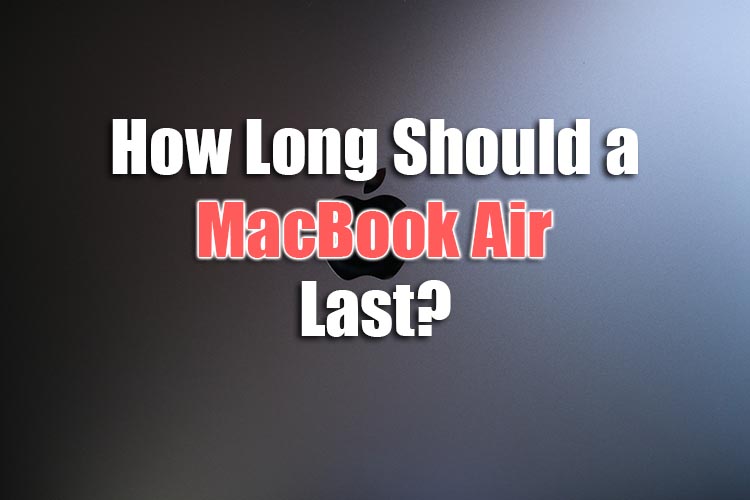
So in response to the query, “How long does a MacBook Air last?” we’d recommend five to eight years as a ballpark figure based on assessing the previous lifespans of MacBook Airs, but keep in mind that once it’s been more than five years since Apple last sold it, you won’t be able to replace any problematic parts.
Nonetheless, considering how much MacBook Airs have improved in the last five years, the speed of power of the MacBook Airs will likely have improved so much over the next five that you would want to upgrade anyway, due to the vastly superior performance.
Read More:
How long does a MacBook Pro last?


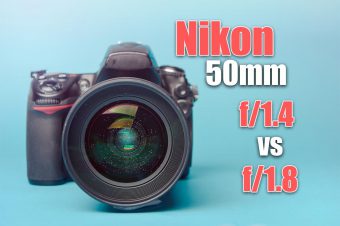



Leave a Reply